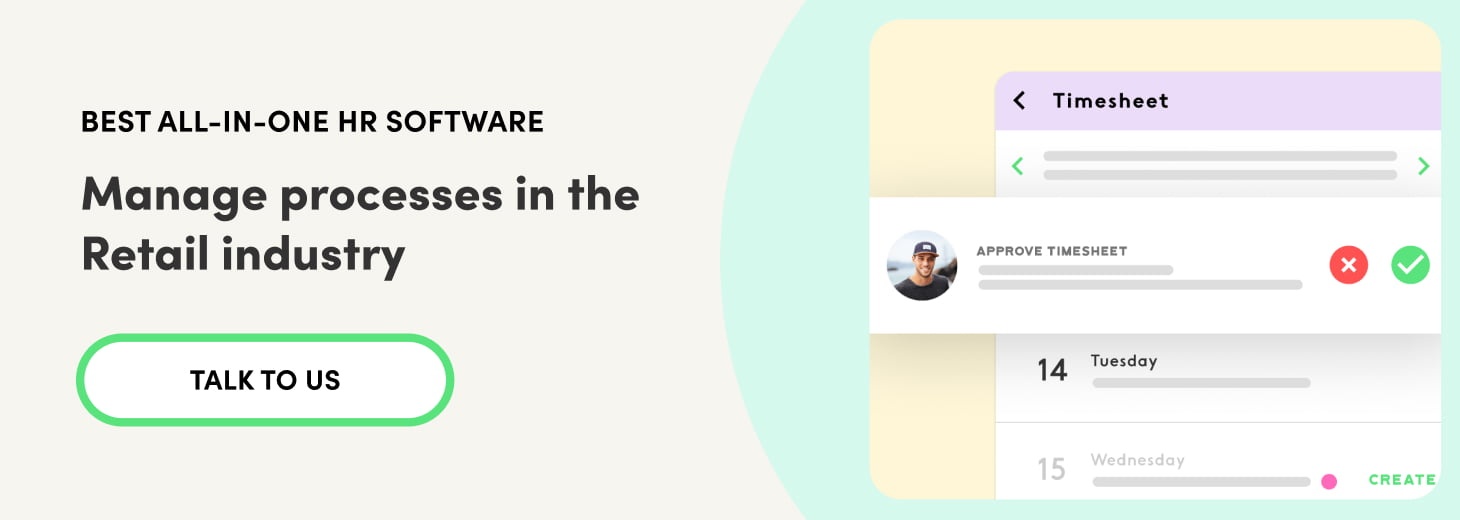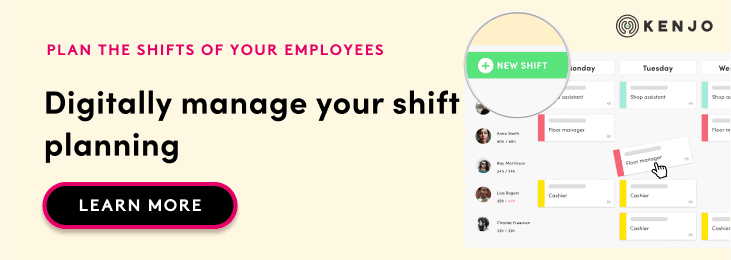Knowing how to motivate employees in the retail sector can be a significant factor in a company’s success. It will help improve customer service and reduce the staff turnover rate, which is on average 1.5% higher than other industries.
What techniques or strategies do you use to promote team wellbeing? We’ll give you a few ideas below that you can easily implement.
Why is employee motivation important in the retail sector?
As Einstein said, “there is a driving force more powerful than steam, electricity and atomic energy: will”. With that in mind, one of the most important pillars of an organisation is the level of motivation and wellbeing of the employees. In other words, the enthusiasm they bring to work every day. This can also be contagious: if the employees work well, the company results will be favourable.
A motivated employee, therefore, will achieve the following:
- Be more productive and efficient.
- Feel more engaged in the company.
- Be interested in growing and developing professionally.
- Make the company more competitive.
- Attract new talent thanks to recommendations they make about your company.
- Reduce the likelihood of them leaving the organisation.

In the retail sector, where leaving rates are so high, it is particularly important to maintain good levels of motivation. It is one of the resources companies have at their disposal to try to minimise the loss of talent.
The main data on employee motivation in retail
Luckily, we now have many studies on employee motivation that give us a better indication of what concerns them most, where we might be failing and what elements we should improve to have greater impact.
A study by Angela Michelle Addair, Retail Employee Motivation and Performance, highlights some interesting facts that can help us understand how to motivate teams in retail:
- Only 21% of employees feel happy with the communication with their superior.
- 58% of the professionals surveyed are not satisfied with their salary.
- 54% of workers are not sure if their salary is competitive in the current market.
- 60% of those surveyed stated that the salary is a very important aspect for them.
- 55% of workers think it is very important for them to be able to develop all their skills and expertise.
- Employees who receive a bonus or monetary incentives obtain results that are 10% higher than those who receive nothing.
You may also be interested in our article on the main HR challenges in the retail sector.
7 strategies to motivate employees in the retail sector
How do you motivate employees in retail? While incentives and recognition are two key means to achieving this objective, there are other techniques that can help maintain employee engagement with the company.
1. Organise shifts well and communicate them in good time
Rotating shifts are very common in the retail sector. Try to communicate rotas clearly and well in advance. This will allow your employees to balance their work and personal lives more easily, making them feel more relaxed.
Make sure that hours are allocated equally and that they follow the rules established by law. Poor shift management can lead to a higher leaving rate. The best option is to use a rotating shift management software, to digitise and automate the process.
In this way, employees will be able to view their shifts when they want, and their manager can advise them via the platform of any changes that take place.

2. Recognise good work
If there is no recognition, employees can feel undervalued, and it can even lead to frustration, low morale, and poor productivity. It is therefore important to create a culture of individual or group recognition.
You can, for example, have an “employee of the month”, share success stories, or report positive client feedback, as well as sending personal messages to each employee when they achieve their objectives. Small gestures are what counts and will make the worker feel part of a company that values their efforts. This will increase their feeling of belonging and their engagement with the company.
3. Arrange individual meetings
Speaking to each employee, one at a time, will give you the opportunity to listen to their observations, comment on their performance, identify areas for improvement and offer help when it is necessary.
A quick meeting like this helps to construct a better relationship between employees and HR. Workers will feel more comfortable sharing their ideas and concerns, and, above all, will feel heard and valued.
4. Implement team building or coaching measures
Another factor that helps motivate employees in the retail sector is having a good working environment. To achieve this, one strategy often employed is organising team building activities. These aim to promote team performance, collaboration and communication, and the feeling of belonging.
Team coaching is also very popular, where a professional supports a group of employees on the path towards achieving their goals. The coach figure is responsible for providing available resources and creating new learning opportunities.
5. Encourage professional development
Design professional development plans so employees see that they have a future at the company and choose to stay. Growth opportunities should be available for all.
Support these plans with training sessions or workshops that help the staff improve or acquire new skills. In this way, workers will see the benefits of staying with the organisation.
6. Create a pleasant break room
In physical shops, employees spend a lot of time on their feet serving customers. Their only respite comes from the small breaks they get during the day. Therefore, why not create a pleasant space so they can enjoy these rare moments of rest?
Try to create a room that really allows the team to recharge their batteries and return to their work enthusiastically. Design a space that invites people to relax with comfortable chairs or sofas, a table to eat and provide water, coffee, and fruit. Try to prioritise a light colour scheme, so the lounge appears brighter, and add some decorative features to make it more welcoming.
7. Surprise your team now and again
Sometimes, the best way to motivate employees is to break the monotony with an appealing and unexpected surprise. For example, if Saturdays are hectic, take them a surprise breakfast, or if sales have been good, let them go home early that day. A small gesture of this kind can alleviate stress and improve their wellbeing.
%20(1).jpg)


